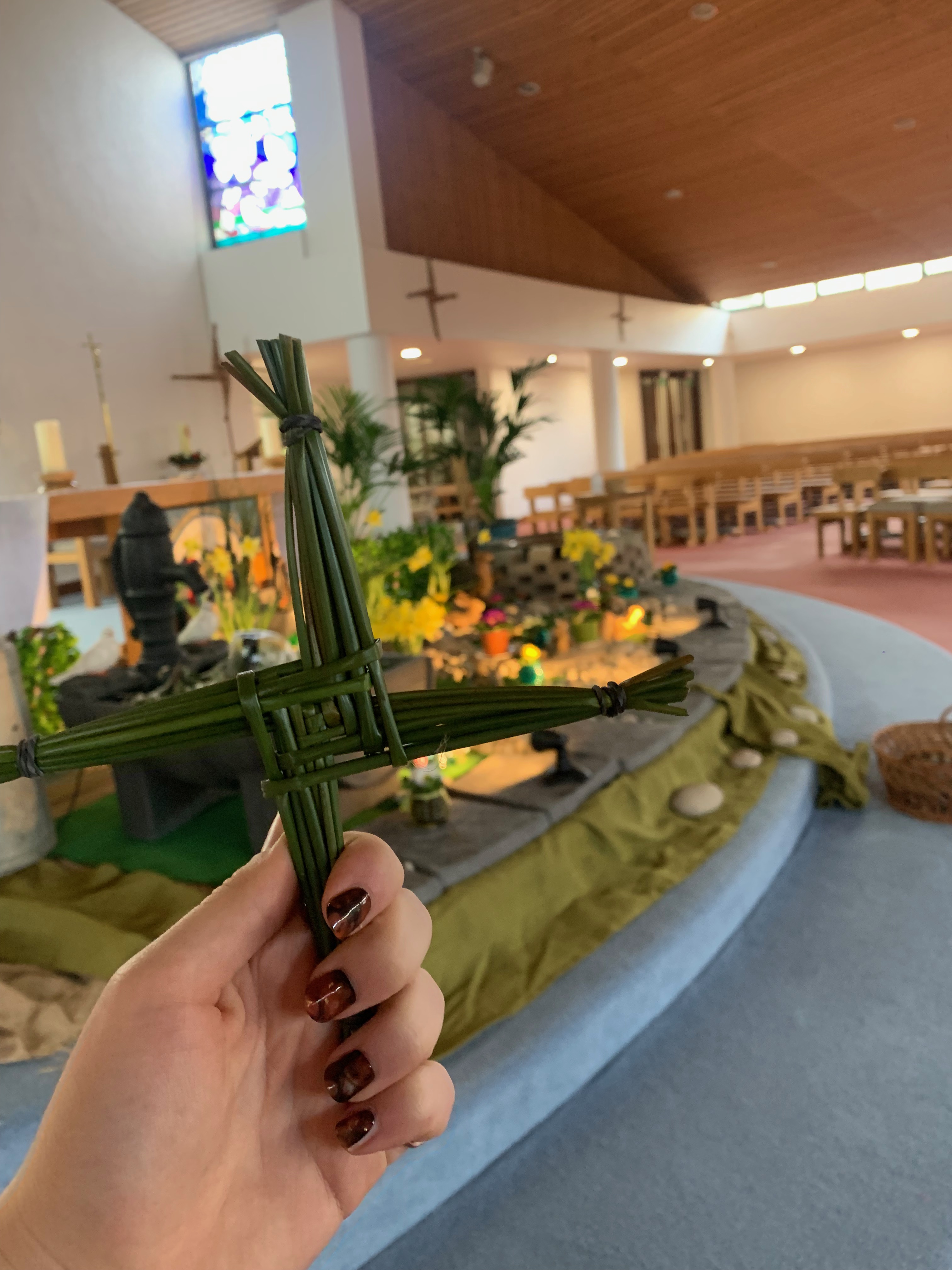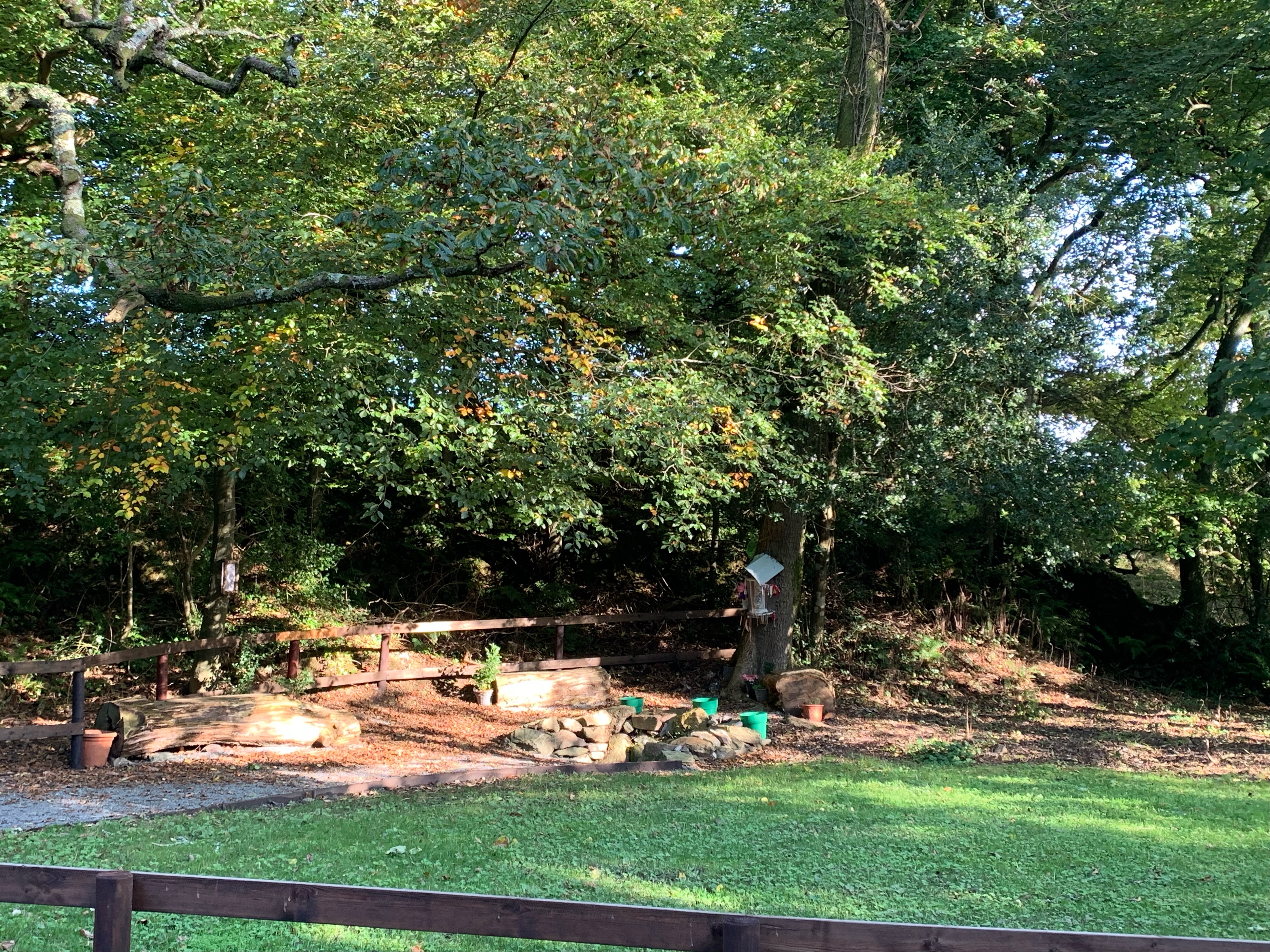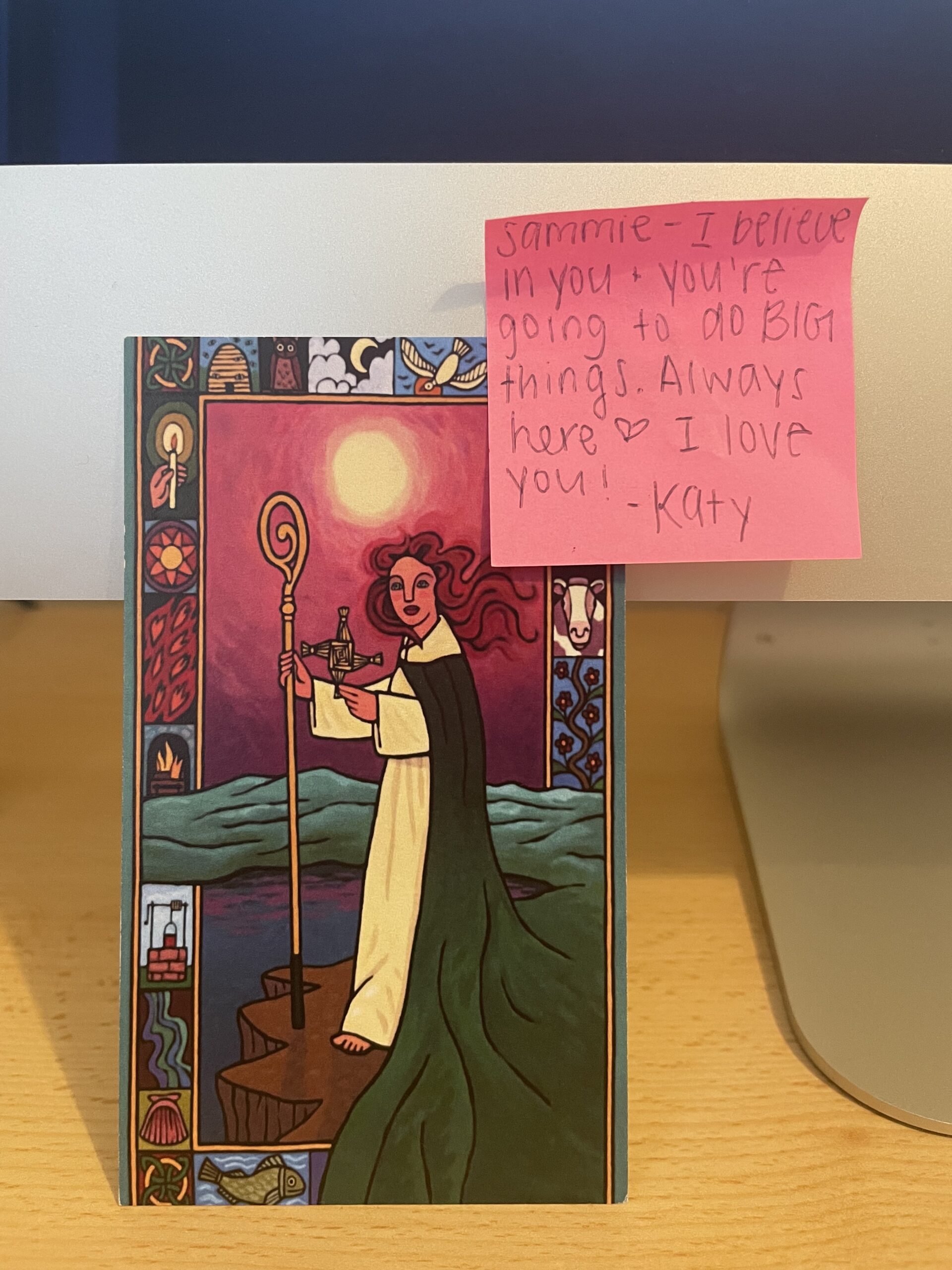This past week has been filled to the brim with preparations for St. Brigid’s Day and the first of our Confirmation retreats for the local schools. Traveling out to Ballyvallo and speaking with my small group reminded me of my own preparations for the sacrament, and of course, picking out my confirmation saint. I remember spending hours on the computer after school googling saint stories and patron saints, and referencing the illustrated book of saints I had been given at my First Communion. I even used my heart shaped sticky notes to write shortlists of my favorite stories and saints. After all these years, there is one particular story that has still stuck with me–of a beautiful young woman whose father wanted her to be married while she wanted to serve the poor and consecrate her life to God. She prayed to the Lord to take away her beauty to make her undesirable to her suitors, and He answered her prayer and veiled her beauty. After she continued to give her father’s wealth and belongings to the poor, her father finally agreed to let her join a convent, and on the day she professed her vows her beauty returned. At the time, I couldn’t fathom asking God to take away my beauty; I was too busy praying for my braces to be taken off early and my acne to go away. I thought that choosing this saint for my confirmation name would be a wonderful way to remind myself that there are much more important things in life than looks, and a devotion to one’s faith is more desirable than anything.
That saint just happened to be St. Brigid, the very woman who inspired our program. (I would have bragged about choosing St. Brigid as my Confirmation saint sooner, but as fate would have it I spelled her name like the Swedish St. Bridget instead, and I was too embarrassed to admit my fourteen-year-old self’s mistake.) In honor of her feast day this week, I thought you all could benefit from an introduction to St. Brigid of Kildare and the ways we celebrate her here in Wexford.
St. Brigid was born in 450 AD in County Louth, just 18 years after the arrival of St. Patrick. Her father was a pagan chieftain, and her mother was a Christian slave. For the first eighteen years of her life, Brigid worked as a slave alongside her mother. When she heard the teachings of St. Patrick she became a Christian herself and with a little help from God, Brigid eventually joined a convent. She’s well known for founding several convents all over Ireland and even founded a school of art that was led by St. Conleth.
There are many legends of St. Brigid, and the legend of her first miracle is one of my favorites. When Brigid first decided to create a new convent, she went to the King of Leinster for land to build it upon. He laughed at her and refused her request, so she prayed to God to soften the King’s heart. When she returned, she asked the King for only the land that her cloak could cover. Thinking this was a joke, the King laughed and agreed, so Brigid set her cloak on the ground and asked her four companions to hold a corner of the cloak and start walking. To the amazement of the King and her companions, Brigid’s cloak grew and grew to cover acres of land. After witnessing this miracle, the King promised Brigid as much money, food, and supplies as they needed and soon converted to Christianity.
One day St. Brigid was traveling with another nun, Sister Dara, when they came upon a beautiful sunrise. Because Dara was blind, Brigid prayed to the lord to restore her sight so that she could witness the beauty of God’s creation. God answered her prayer, but after Dara saw the sunrise, she asked that Brigid return her to the beauty of darkness because clarity of sight blurred the vision of God she held in her soul. Holy wells across Ireland, like the one we visited in Castlebridge, are dedicated to St. Brigid and the water is believed to have curative properties for eye ailments.
Along with being a patroness of Ireland, St. Brigid is also the patron saint of beer. According to legend, one day while she was serving a colony of lepers, Brigid found that they had run out of beer so she transformed a nearby lake into beer, and it was the best ale any of them had ever drank. There’s even a tenth century poem that commemorates the miracle:
I’d like to give a lake of beer to God.
I’d love the heavenly
Host to be tippling there
For all eternity.
I’d love the men of Heaven to live with me,
To dance and sing.
If they wanted, I’d put at their disposal
Vats of suffering.
White cups of love I’d give them
With a heart and a half;
Sweet pitchers of mercy I’d offer
To every man.
I’d make Heaven a cheerful spot
Because the happy heart is true.
I’d make the men contented for their own sake.
I’d like Jesus to love me too.
Needless to say, St. Brigid was a pretty remarkable woman and it’s no wonder that they have officially named her feast day a bank holiday here in Ireland. We began our own celebrations with a vigil ceremony at the Brigid’s Well in Castlebridge. The evening included trad music, reflections to St. Brigid, a blessing of the well, and even some singing in Irish by Teach Bhríde. We hung up ribbons outside of our windows as Brat Bríde to be blessed by Brigid as she walked the earth. Brat Bríde are named after Brigid’s cloak, and are thought to bring healing, blessing, and protection for those who carry it with them or hang it in their home. We worked long and hard creating a prayer service to be posted on YouTube for anyone to pray with, (which you can find here!) In the morning, we sang Irish tunes and a Hymn to Saint Brigid at mass, and passed out handmade Brigid Crosses to our parishioners. Although we made our crosses with paper straws, the original cross was made by Brigid with rushes she pulled from the ground and wove into a cross as she comforted a pagan chieftain on his deathbed and baptized him in his final moments. In some versions of this story, this pagan chieftain was Brigid’s own father. I like to think that it was, and that despite their differences over the years, St. Brigid was able to give her father one last blessing.
Because Brigid’s Day falls on the first day of spring, Imbolc, you often hear that “Brigid brings the spring.” Although this typically means that her feast brings the first warm breeze and sun filled afternoon of the year, I believe it can also mean that her feast brings a new beginning. For our house, it brought the arrival of our final member Emily! For many of you covered in feet of snow back in the U.S. the spring may seem far away, but I pray that Brigid brings a new beginning into your heart.




